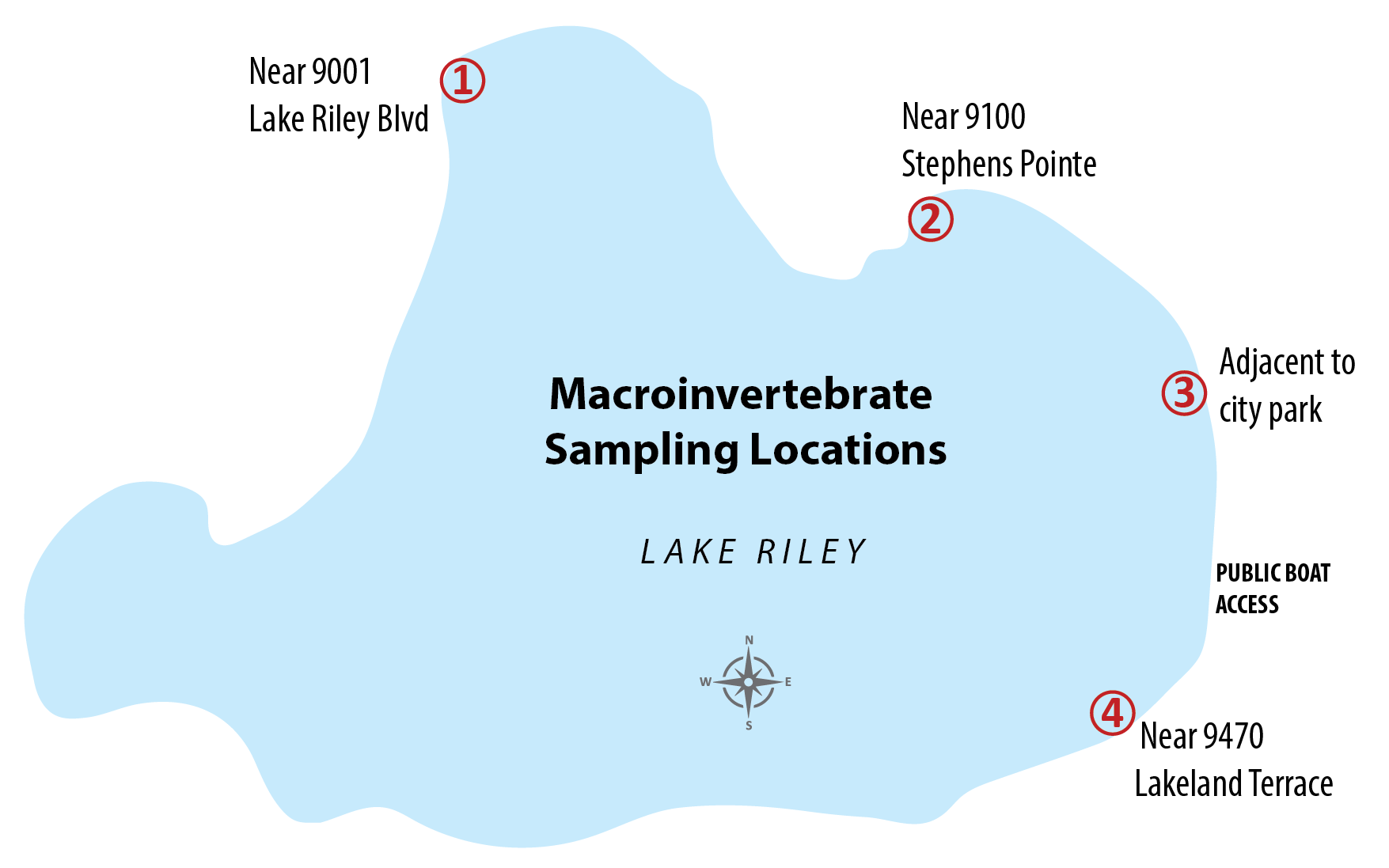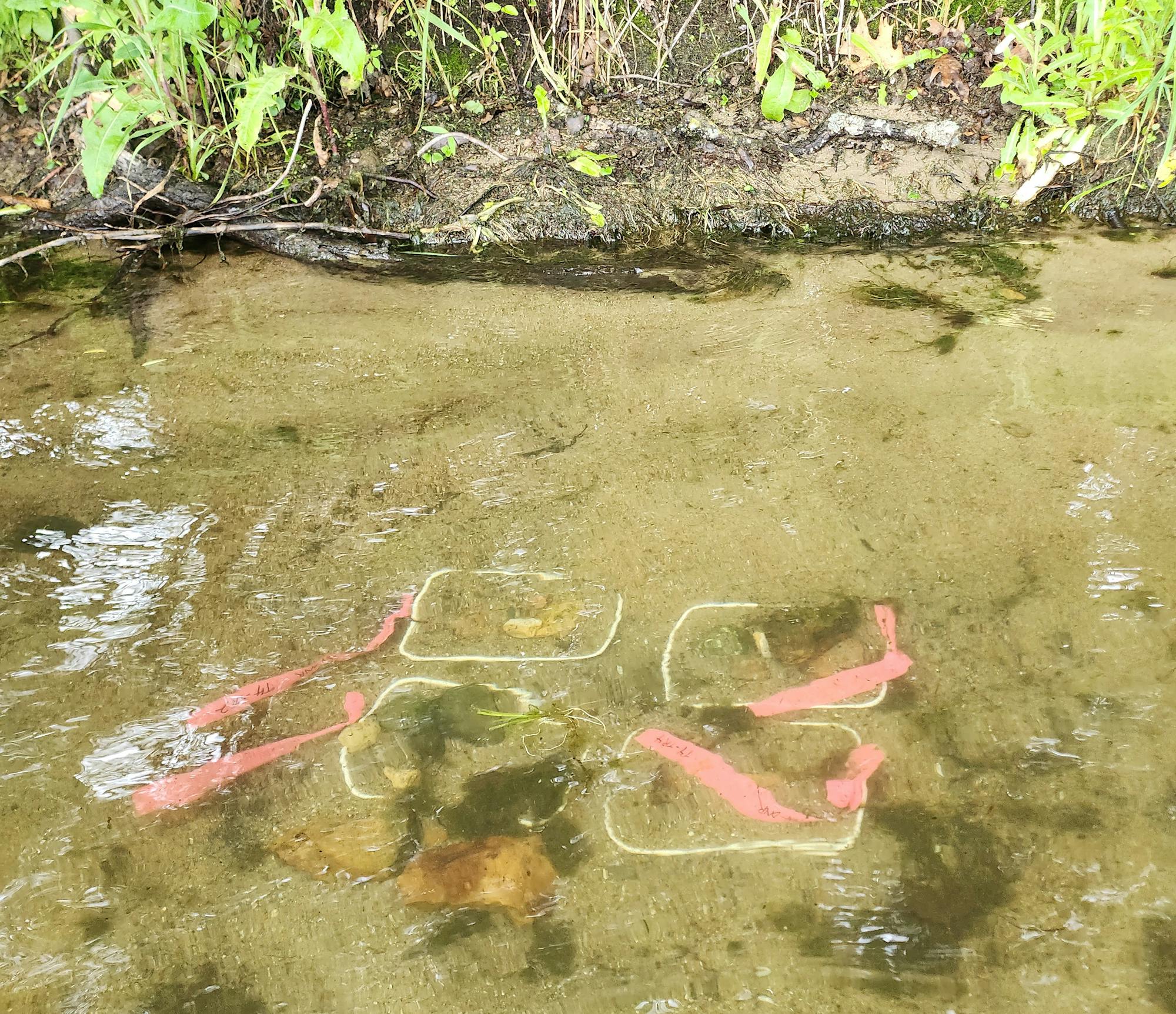Macroinvertebrate study on Lake Riley
Aquatic Macroinvertebrate Study on Lake Riley
The Minnesota Department of Natural Resources (DNR) is undertaking an aquatic macroinvertebrate study in Lake Riley from 2025 through 2027. Aquatic macroinvertebrates are insects in their nymph and larval stages, snails, crayfish, and mussels that spend at least part of their lives in water. These animals play a large role in lakes and other aquatic ecosystems by recycling nutrients and serving as food for larger animals.
Please do not disturb the sampling sites!
Where are the sampling sites located?
There are four sampling sites located on the northern and eastern sides of the lake. See map for appoximate locations.

What does a sampling site look like?
At each sampling site, DNR staff has installed 3 to 4 plastic trays (takeout container sized) in less than 1 foot of water near the lakeshore. The trays are typically placed on undeveloped/natural shoreline and out of the way of boat traffic and other recreational use. The trays are wedged in sand to stay secure and have a piece of pink tape tied on the help researchers relocate the trays. Orange stakes (the kind placed along driveways in winter) also mark tray locations. During open water season, staff will pull and replace the trays every 1 to 2 months to collect data on macroinvertebrate diversity and quantity.
Please do not disturb the sampling trays!

How long will the study last?
The study will take place 2025 through 2027. Staff will visit the trays every 1 to 2 months during the open water season. Additional studies may occur every 1 to 3 years.
